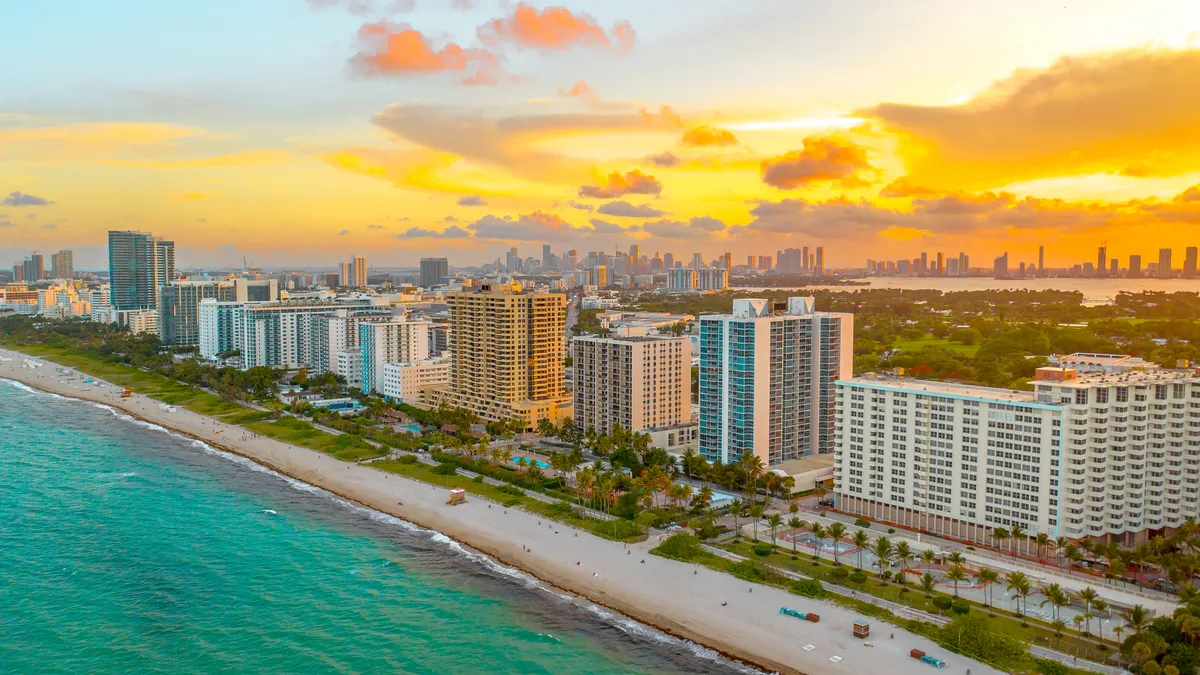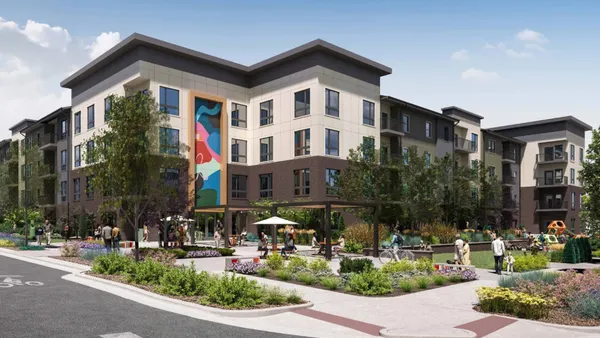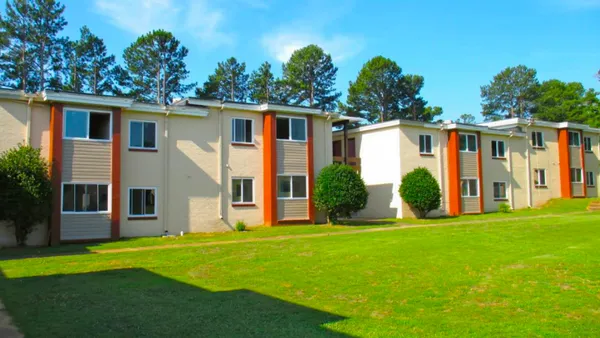Dive Brief:
- Residents of a 14-story Miami-area condominium near the former site of the Champlain Towers South building are waiting to be allowed back in their homes after being evacuated by the city of Miami Beach.
- Officials posted an unsafe structure notice Oct. 27, forcing the abrupt evacuation at the 164-unit Port Royale, Miami Beach spokesperson Melissa Berthier told AP News. It sits a few miles away on the same street as the former Champlain Towers South, which collapsed in June 2021, killing 98 and injuring dozens of others.
- Built in 1971, Port Royale is in the process of undergoing a required recertification. An engineer discovered that a main support beam identified for repair 10 months ago had shifted and that a crack in the beam had expanded, and other structural supports may need repair as well, AP said.
Dive Insight:
Inspection Engineers Inc. said in a letter to the city that it was working with a shoring expert to obtain a permit from the city. The letter said that the new shoring would be installed within 10 days, and then engineers would inspect the building again, AP reported.
The Port Royale incident may be a sign of things to come, according construction defects attorney Marc Gravely, founder of San Antonio, Texas-based Gravely Attorneys and Counselors. He told Multifamily Dive that he expects to see more potentially dangerous situations arise because a lot of condo buildings built in the 1970s and 1980s “are beginning to reach the end of their useful life.”
The cause of the Surfside collapse is still under investigation. Federal officials investigating the incident are looking into the history of the building for reasons as to why it suddenly gave way, according to a lead investigator from the National Institute of Standards and Technology.
The Surfside tragedy prompted the passage of Senate Bill 4-D, which requires stricter inspections and prohibits condo associations in the state from waiving maintenance reserve funds. By the end of 2024, the legislation requires condominiums that are at least three stories tall and within 3 miles of the coast be inspected by a licensed engineer or architect when they reach 25 years of age and buildings more than 3 miles inland at 30 years.
Condo associations — which until now have been allowed to waive reserve funds for maintenance — will also be required to have enough money in their reserves by 2025 to fund all repairs necessary to maintain their buildings’ structural integrity, which could easily be hundreds of thousands of dollars.
More than maintenance issues
Gravely, who has not inspected the Port Royale building, said that in general these types of issues stem from more than just poor maintenance.
“At their root, they are because of construction defects,” he said. “How can you ever hope to maintain a building that’s not built right in the first place?”
In Florida, Gravely said, the effects of poor construction are accelerated by the weather and excessive moisture.
In this scenario, stricter regulations requiring inspections and mandatory maintenance reserve funds won’t make any difference because “it has to do with developers and contractors and designers not designing and building things correctly,” Gravely said.
As new condos are built, Gravely recommends that HOA boards conduct a post-construction audit immediately after construction is complete to determine whether there are issues such as defective materials, poor workmanship or flawed design. Gravely’s firm commonly encounters problems such as improperly installed roofing, window and wall systems; grading and drainage issues that lead to large foundation cracks; and HVAC systems that were never tested or balanced correctly.
Ultimately, Gravely believes HOA boards will start being held liable “for not being diligent and not following their fiduciary duty to protect the property rights of the owners and get liability insurance money from the people who built the buildings.” His firm is already representing condo owners suing boards for this reason, he added.







